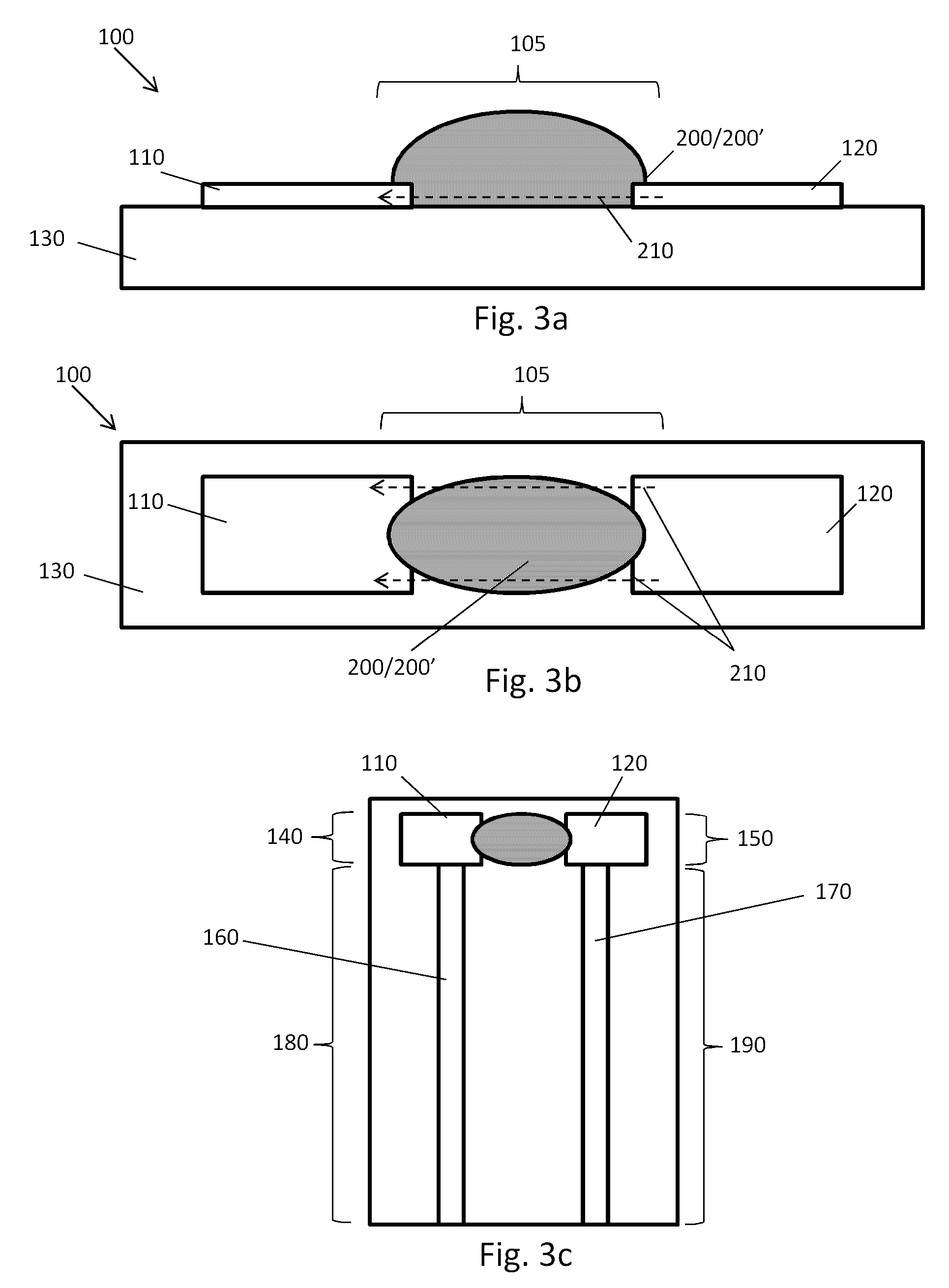Methods and devices for determining sensing device usability
a sensing device and usability technology, applied in the field of methods for determining the usability of the device, can solve the problems of affecting the patient's condition or prognosis, affecting the patient's treatment, and increasing the cost of analysis of laboratory testing
- Summary
- Abstract
- Description
- Claims
- Application Information
AI Technical Summary
Benefits of technology
Problems solved by technology
Method used
Image
Examples
first embodiment
[0042]In a first embodiment, the present invention relates to a method for determining device usability with a time / humidity indicator (THI). In one embodiment, the method comprises the steps of providing a device comprising a first electrical pad, a second electrical pad, and a THI material (preferably a continuous humidity-responsive polymer layer) contacting at least a portion of the first and second electrical pads; applying a potential across the first and second electrical pads; measuring an electrical property associated with the THI material; and determining whether the measured electrical property associated with the THI material has exceeded a threshold level associated with the device usability.
[0043]In one aspect, as shown in FIGS. 3a and 3b, a THI device 100 for determining device usability comprises a polymer layer 105 formed in electrical contact with contact pads 110 and 120. The contact pads 110 and 120 may further be in contact with a substrate or base 130 (optiona...
second embodiment
[0065]In the second embodiment, the invention is to a device, a sensor, and a THI material, e.g., continuous humidity-responsive polymer layer, formed on a substantially planar surface wherein the surface comprises two adjacent electrical contact pads. The THI material covers at least a portion of the two electrical contact pads and a portion of the space on the surface between the contact pads. In operation, a preselected potential or potential cycle is applied to the contact pads and an electrical property, e.g., impedance or current, associated with the THI material is measured. The measured value is converted to a correction parameter that is applied to a signal from the output of the sensor to provide a corrected sensor signal.
[0066]In a related embodiment, the invention is to a method of correcting a signal in a sensing device, comprising the steps of: (a) providing a sensing device comprising a sensor, a first electrical pad, a second electrical pad, and a THI material, e.g.,...
PUM
| Property | Measurement | Unit |
|---|---|---|
| length | aaaaa | aaaaa |
| distance | aaaaa | aaaaa |
| diameter | aaaaa | aaaaa |
Abstract
Description
Claims
Application Information
 Login to View More
Login to View More - R&D
- Intellectual Property
- Life Sciences
- Materials
- Tech Scout
- Unparalleled Data Quality
- Higher Quality Content
- 60% Fewer Hallucinations
Browse by: Latest US Patents, China's latest patents, Technical Efficacy Thesaurus, Application Domain, Technology Topic, Popular Technical Reports.
© 2025 PatSnap. All rights reserved.Legal|Privacy policy|Modern Slavery Act Transparency Statement|Sitemap|About US| Contact US: help@patsnap.com



